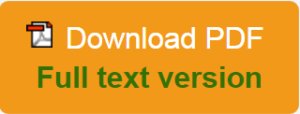Authors :
Arlindo João Catchongo Caiombe
Volume/Issue :
Volume 9 - 2024, Issue 6 - June
Google Scholar :
https://tinyurl.com/yck6m4zx
Scribd :
https://tinyurl.com/ym8aa96j
DOI :
https://doi.org/10.38124/ijisrt/IJISRT24JUN968
Note : A published paper may take 4-5 working days from the publication date to appear in PlumX Metrics, Semantic Scholar, and ResearchGate.
Abstract :
The main focus of this article is to addresses
issues about the pecha kucha approach in the university
English classes. It is intended here to describe the impact
of the of the new presentation format in the new modern
University English classrooms. In order to attain the aim
of this article, we conducted a bibliographic study that
pays a special attention on the advantages and
disadvantages of pecha kucha in university classroom.
Under advantage section we can find some important
features such as the pedagogical benefits, the teacher-
student roles, and last but not the least, the use of
technology. On the other side, the drawback section
explains the three main limitations such as time constraint,
content restriction, and excessive number of rehearsals. In
this new decade there is a burning desire among teachers
in helping students to be technologically skilled. Through
the use of pecha kucha students not only acquire the
necessary tech skills but also it builds in them a critical
thinking. The study concludes that there are more
advantages than disadvantages in using pecha kucha in the
university English classes. Moreover, the study also
highlights that one possible solution to mitigate the time
constraint problem is to allow the flexibility at the moment
of action.
Keywords :
Pecha Kucha, Presentation, University Classes, Advantages, Drawbacks.
References :
- Anderson, J. S. & Williams, S. K. (2012). Pecha Kucha for lean and sticky presentations in business classes. Working Paper Series 12-03.
- Beyer, A. M. (2011). Improving student presentations: Pecha Kucha and just plain PowerPoint. Teaching of Psychology 38(2), pp. 122-126.
- Brooks, G. & Wilson, J. (2015). Using Oral Presentations to Improve Students’ English Language Skills. Kwansei Gakuin University Humanities Review 19, pp. 199-212. Retrieved from http://kgur.kwansei.ac.jp/dspace/bitstream/10236/13201/1/19-14.pdf
- Ellis, R. (2003). Task-based language learning and teaching. Oxford, England: Oxford University Press.
- Ellis, R. (2015). Epilogue. In M. Thomas & H. Reinders (Eds.), Contemporary task-based language teaching in Asia (pp. 381-384). London, England: Bloomsbury Academic.
- Fallows, S., & Steven, C. (2000). Building employability skills into the higher education curriculum: a university-wide initiative. Education + Training, 42(2), 75-83. https://doi.org/10.1108/00400910010331620
- Hayashi, P. M. J., & Holland, S. J. (2017). Pecha kucha: Transforming student presentations. In P. Clements, A. Krause, & H. Brown (Eds.), Transformation in language education. Tokyo: JALT
- King, J. (2002). Preparing EFL learners for oral presentations. Dong Hwa Journalof Humanistic Studies, 4, 401–418.
- Lotherington, H., & Jenson, J. (2011). Teaching multimodal and digital literacy in L2 settings: New literacies, new basics, new pedagogies. Annual Review of Applied Linguistics, 31, 226-246. https://doi.org/10.1017/S0267190511000110
- MEXT. (2011). The vision for ICT in education—Toward the creation of a learning system and schools suitable for the 21st century. Retrieved 10 May 2024 from http://www.mext.go.jp/b_menu/houdou/23/04/__icsFiles/afieldfile/2012/08/03/1305484_14_1.pdf
- Nguyen, H. (2015). Student perceptions of the use of PechaKucha presentations for EFL reading classes. Language Education in Asia, 6(2), 135-149. http://dx.doi.org/10.5746/LeiA/15/V6/I2/A5/Nguyen
- Richards, J. C. (2008). Second language teacher education today. RELC Journal, 39(2), 158-177.
- Soto-Caban, S., Selvi, E., & Avila-Medina, F. (2011). Improving communication skills: Using PechaKucha style in engineering courses. Retrieved from http://www.asee.org/public/conferences/1/papers/2000/download
- Sundrarajun, C., & Kiely, R. (2010) The oral presentation as a context for learning and assessment, Innovation in Language Learning and Teaching, 4(2), 101-117. https://doi.org/10.1080/17501220903125021
- Thomas, M., & Reinders, H. (Eds.). (2015). Contemporary task-based language teaching in Asia. London, England: Bloomsbury Academic.
- Tigre, P. B. (2006). Gestão da Inovação: A Economia da Tecnologia no Brasil Paulo (7a Reimpre). São Paulo: Elseiver Editora.
- Tomsett, P. M. & Shaw, M. R. (2014) Creative Classroom Experience Using Pecha Kucha to Encourage ESL Use in Undergraduate Business Courses: A Pilot Study. International Multilingual Journal of Contemporary Research 2(2), pp. 89-108.
- Van den Branden, K. (2006). Task-based language education: From theory to practice. Cambridge, England: Cambridge University Press.
- Walker, A., & White, G. (2013). Technology enhanced language learning. Oxford, England: Oxford University Press.
- Willis, D., & Willis, J. (2007). Doing task based teaching. Oxford, England: Oxford University Press.
The main focus of this article is to addresses
issues about the pecha kucha approach in the university
English classes. It is intended here to describe the impact
of the of the new presentation format in the new modern
University English classrooms. In order to attain the aim
of this article, we conducted a bibliographic study that
pays a special attention on the advantages and
disadvantages of pecha kucha in university classroom.
Under advantage section we can find some important
features such as the pedagogical benefits, the teacher-
student roles, and last but not the least, the use of
technology. On the other side, the drawback section
explains the three main limitations such as time constraint,
content restriction, and excessive number of rehearsals. In
this new decade there is a burning desire among teachers
in helping students to be technologically skilled. Through
the use of pecha kucha students not only acquire the
necessary tech skills but also it builds in them a critical
thinking. The study concludes that there are more
advantages than disadvantages in using pecha kucha in the
university English classes. Moreover, the study also
highlights that one possible solution to mitigate the time
constraint problem is to allow the flexibility at the moment
of action.
Keywords :
Pecha Kucha, Presentation, University Classes, Advantages, Drawbacks.

